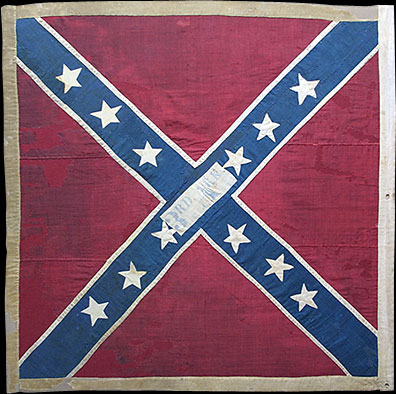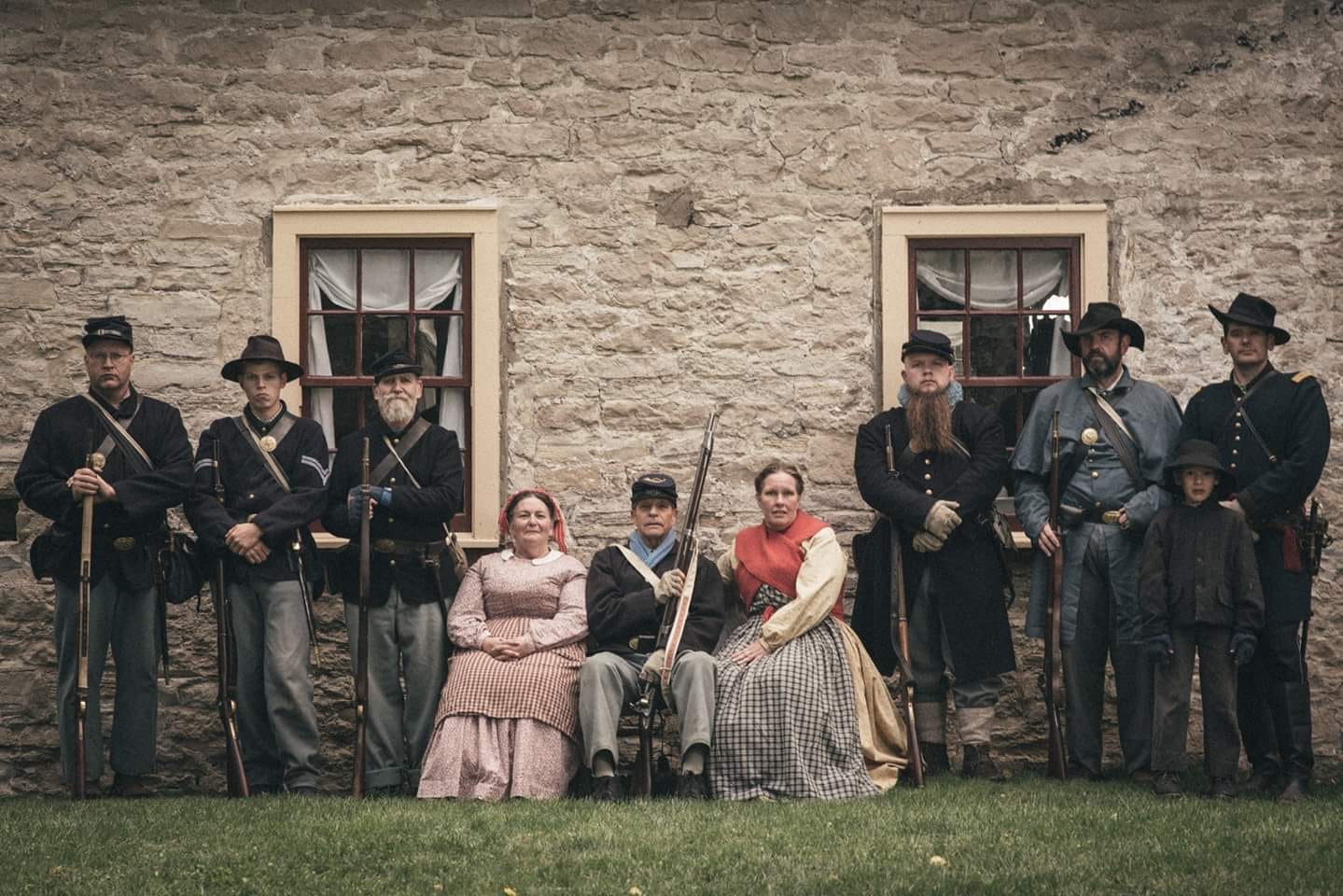3rd Arkansas
 The regiment was formed in May and June 1861, initially by Dr. W. H. Tebbs, who would be appointed a captain, and Van H. Manning whom would later command the regiment. Early in May, 1861, Dr. W. H. Tebbs, Captain of a volunteer company raised on Bayou Bartholomew, in Ashley county, and Captain Van H. Manning, the Captain of a company organized at Hamburg, in Ashley County, went to Vicksburg, Mississippi in order to tender the services of their two companies, for service in the Confederate Army. They contacted Leroy P. Walker, Confederate Secretary of War, at Montgomery, by telegraph and received his reply declining the offer of the two companies separate from a regiment. They then went to Montgomery, and Manning enlisted the help of Arkansas Confederate Senator Albert Rust. Rust helped gain the acceptance as a part of the Confederate Army, conditioned on his raising the remaining companies needed to form a regiment. Rust, returned to Arkansas, and organized nine additional companies, and joined Captain Tebbs and Capt Manning in Virginia, where the regiment was mustered into service for the period of the war.
The regiment was formed in May and June 1861, initially by Dr. W. H. Tebbs, who would be appointed a captain, and Van H. Manning whom would later command the regiment. Early in May, 1861, Dr. W. H. Tebbs, Captain of a volunteer company raised on Bayou Bartholomew, in Ashley county, and Captain Van H. Manning, the Captain of a company organized at Hamburg, in Ashley County, went to Vicksburg, Mississippi in order to tender the services of their two companies, for service in the Confederate Army. They contacted Leroy P. Walker, Confederate Secretary of War, at Montgomery, by telegraph and received his reply declining the offer of the two companies separate from a regiment. They then went to Montgomery, and Manning enlisted the help of Arkansas Confederate Senator Albert Rust. Rust helped gain the acceptance as a part of the Confederate Army, conditioned on his raising the remaining companies needed to form a regiment. Rust, returned to Arkansas, and organized nine additional companies, and joined Captain Tebbs and Capt Manning in Virginia, where the regiment was mustered into service for the period of the war.
The addition of nine companies made eleven when the regiment was organized. Tebbs' Company and Captain Mannings' were perhaps the first and only companies denied admission into the Confederate service, even for a day, and were the first companies enlisted for the war. When organized, the regiment was composed of 11 companies. Colonel Van H. Manning, Commander, 3rd Arkansas Infantry Regiment, later Congressman from MississippiCompany A — "The Arkansas Travelers", commanded by Captain W. H. Tebbs, organized at Portland, Ashley county.
On September 25, 1862, forty-two members of disbanded Company L—also from Ashley county—were assigned to this company. During its four years of service, 147 men served in Company A. Only twenty of them remained when the company was surrendered at Appomattox Court House.
Company B — "The Berlin Beauregards", commanded by Captain Capers, organized at Berlin, Ashley county. During its four years of service, 110 men served in Company B, only eight of them remained when the company was surrendered at Appomattox Court House.
Company C — "The Confederate Stars", commanded by Captain Thomas M. Whittington, organized at Monticello, Drew county. During its four years of service, 154 men served in Company C, only thirteen of them remained when the company was surrendered at Appomattox Court House.
Company D — "The Selma Rifles", commanded by Captain R. S. Taylor, organized at Selma, Drew county. During its four years of service, 83 men served in Company D, only eight of them remained when the company was surrendered at Appomattox Court House.
Company E — "The Champagnolle Guards", commanded by Captain Thomas F. Nolan, organized at Champagnolle, Union county. On July 18, 1862, twenty-eight members of disbanded Company C, Second Arkansas Infantry Battalion, which was also from Union county, were assigned to this company. During its four years of service, 131 men served in Company E, only twenty of them remained when the company was surrendered at Appomattox Court House.
Company F — "The Hot Spring Hornets", commanded by Captain Thrasher, organized at Rockport, Hot Spring county. On July 18, 1862, thirty-three members of disbanded Company A, 2nd Arkansas Infantry Battalion, were assigned to this company; however, most of them were soon discharged for various wounds and illnesses. During its four years of service, 119 men served in Company F, only ten of them remained when the company was surrendered at Appomattox Court House.
Company G — "The Three Creeks Rifles", commanded by Captain Rudy, organized at Three Creeks, Union county. On July 18, 1862, eighteen members of disbanded Company C, 2nd Arkansas Infantry Battalion—also from Union county—were assigned to this company. During its four years of service, 127 men served in Company G, only 23 of them remained when the company was surrendered at Appomattox Court House.
Company H — "The Orphan Company", commanded by Captain Reed, a mixed Arkansas/Kentucky company. The fledgling company had only gathered 33 volunteers, only a third of that needed to constitute a full company. Two companies of Arkansas volunteers from Ashley county, passing through Nashville, Tennessee, on their way to Virginia to form the Third Arkansas Infantry, met Samuel V. Reid, of Kentucky, who had brought 30 of his fellow Kentuckians down to Tennessee, looking for a regiment to attach themselves to. It was proposed that the two groups of volunteers join forces to fit out a full company for the Third Arkansas. The commissioned and non-commissioned officer appointments would be equally divided among the two groups, with Reid becoming captain and Gibson becoming first lieutenant.
Accordingly, the Kentuckians enlisted at Nashville on June 10; the Arkansans enlisted at Tyro on June 15; and the new company traveled to Lynchburg, Virginia, where it was assigned to the Third Regiment, Arkansas Volunteers, as Company H, July 1861. Colonel Albert Rust, regimental commander, referred to the company as "my orphans", a name which the men adopted as "The Orphan Company". In keeping with its cosmopolitan nature, Company H recruited quite a few Virginians during the war. During its four years of service, 116 men served in Company H, only nine of them remained when the company was surrendered at Appomattox Court House.
From its induction into the Confederate Army, the 3rd Arkansas would go on to become one of the most distinguished and well respected Confederate regiments of the war. However, prior to their first battle actions, the first impressions of them by their fellow Confederates were, by written accounts since, not good to say the least. In several accounts, relayed by author and historian Mauriel P. Joslyn, the regiment was first seen as a poorly dressed and poorly equipped lot of ignorant country boys. Once proven in combat, however, those opinions of them would change dramatically. The regiment was ordered to the mountains of West Virginia, where it performed arduous and discouraging service in the campaign on the Gauley and Cheat rivers. This was followed by hard marching under Stonewall Jackson (whom Col Rust later described as "an impracticable old schoolmaster who said grace before he ate and prayed before going to bed") in the Valley Campaign.
The regiment was engaged in the battles of Greenbrier and Allegheny. Under General Jackson at Winchester, in January, 1862, the 3rd Arkansas marched to Bath and Romney, returned to Winchester, and was ordered thence to Fredericksburg and assigned to the brigade of Gen. Theophilus H. Holmes. Colonel Rust was promoted to Brigadier General about this time, and was transferred to a command in the western armies. Van Manning was promoted to the colonel of the regiment succeeding Col. Rust. The 3rd Arkansas was engaged in the battles of White Oak Swamp, June 3, 1862, in J.G. Walker's brigade, on July 1, 1862 participated in the battle of Malvern Hill. In July, 1862, the ranks of the 3rd Arkansas was augmented by the addition of nearly 140 soldiers from the 2nd Arkansas Infantry Battalion. The Second Arkansas Battalion had been organized in October, 1861, from three companies of volunteers from El Dorado, Hot Springs and Pine Bluff. In June, 1862, the 2nd Arkansas Battalion was decimated while leading an assault on the Federal position at Beaver Dam Creek, and its commander, Major William Naylor Bronaugh, mortally wounded. The War Department disbanded the battalion and transferred its survivors to the 3rd Arkansas. On September 17, 1862, at the Battle of Antietam, Companies A and L of the 3rd Arkansas were decimated.
On September 25, the few survivors of Company L were transferred into Company A and Company L ceased to exist. Thus the regiment was reduced to ten companies, the normal complement for an infantry regiment. Col. Manning was seriously wounded during the battle. In November, 1862, the 3rd Arkansas was assigned to the famous Texas Brigade of the Army of Northern Virginia. The Confederate War Department had determined that the troops would benefit from being brigaded with regiments from their home States. At this time, the standard brigade organization consisted of four regiments. There were three Texas regiments in the Army—the 1st, 4th and 5th—and only one Arkansas regiment. It was therefore decided to group these four western regiments together.
The Third Arkansas remained an integral part of Hood’s Texas Brigade until the end of the war. The first engagement that the unit participated in as part of the Texas Brigade was the Battle of Fredericksburg in December, 1862. The regiment was not engaged at Chancellorsville, being detached with the rest of Longstreet's Corps at Suffolk. The 3rd Arkansas acquired a reputation as tenacious fighters, often finding themselves in the thickest fighting on the battlefield, such as their presence at the "sunken road" during the Battle of Antietam. Their most famous action was while serving as a part of the Texas Brigade during the Battle of Gettysburg, at the Devil's Den, where they took heavy casualties while serving under General John Bell Hood. Its place in the front of Hood's assault meant it was one of the first units, if not the first, to be heavily engaged during the second day of the battle.
The regiment was commended for gallantry in that action, while under the direct command of Brigadier General Jerome B. Robertson, fighting in and in the vicinity of the "Devil's Den". The regiment was transferred with Longstreet's Corps to Tennessee in September 1863 in time to fight at the Battle of Chickamauga (where Major Reedy was mortally wounded).
The unit went to participate in the battles of Chattanooga, Wauhatchie, and in the siege of Knoxville, Tennessee, returning to the Army of Northern Virginia in the spring of 1864. The regiment suffered heavy casualties later in the Battle of the Wilderness, during which they lost many of their commanding officers in addition to heavy losses in their ranks. In that battle they lost Colonel Van Manning and Lt. Col. Robert Samuel Taylor, both of whom were badly wounded and captured, in addition to Major William K. Wilkins, who was killed in action.
The regiment continued the fight at Spotsylvania, and on to Cold Harbor. The regiment was at Deep Run on August 6, 1864; at Petersburg during the siege by Grant, at High Bridge and Farmville during the closing day of the war in 1865. By the end of the war, the Texas Brigade as a whole, which included the 1st, 4th, and 5th Texas, and the 3rd Arkansas, had only 617 men remaining out of a total of 5,353. The 3rd Arkansas Infantry is entitled to the following campaign participation when General Robert E. Lee surrendered at Appomattox Courthouse on April 9, 1865. Only 144 men of the 3rd Arkansas remained out of the 1,353 mustered into it from the start of the war. Go to Top
